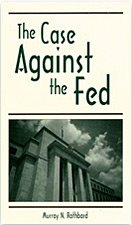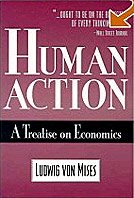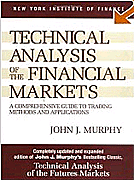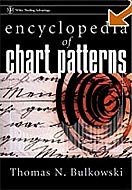Gold Gives Up Last Week's Gains in "Suspect" Sell Off
By Jon A. Nones
03 Oct 2006 at 06:01 PM EDT
St. LOUIS (ResourceInvestor.com) -- The gold market ignored the news today that North Korea plans to conduct its first nuclear test, and accompanied crude’s drop of nearly 4%. James Turk, founder and chairman of GoldMoney.com, and Jon Nadler, analyst at Kitco.com, offered their collective four cents to RI regarding today’s gold sell off.
Turk said that gold’s thrashing today indeed seemed a bit suspect.
“There has been a lot of physical metal being dumped in London recently, which is presumed to be central bank selling,” said Turk. “Its intent seems to keep the price of gold under $600.”
Today, the European Central Bank (ECB) reported that one bank within the Central Bank Gold Agreement sold EUR 37 million ($47 million) in gold during the week ending September 29 - two days after the deadline for yearly gold sales according to agreement. This amounts to roughly 2.4 tonnes.
"So if the gold didn't come from Europe, where did it come from?" Turk asked.
Last year's gold sales concluded on September 27, and at the time, were about 102-tonnes short of the allotted 500-tonne limit. This 2.4 tonnes would put the total up to only 400.4 tonnes for the agreement year.
However, in September alone, the banks reported 53.5 tonnes of gold sales, well over the 33-tonne monthly average for the year.
A source closely following the activity of the European Central Bank forwarded Resource Investor the bank’s response to whether all the gold sales had been completed for the year.
The bank replied: “Please note also that the annual gold sales cover spot and forward sales transacted during the Central Bank Gold Agreement year.”
“I don't know if this is meant to imply that there are still unannounced forward sales,” the source said.
Nadler said this is not necessarily bearish or bullish, since a new year of sales with an allotted 500-tonne limit began immediately after the deadline. He said that private investors now hold more cumulative gold than central banks, and are the ultimate drivers of the market.
“As investors accumulated close to 200 million ounces of gold over the past five years, the argument can be made that a lot of gold has moved from weaker hands into stronger ones,” he added.
Nadler said the funds largely increased positions during the last few weeks while gold was holding support from $590-$600/oz, but sold today when support was broken.
"Whether or not some bank 'rushed' to sell in the final days of last month is not as important to the market as which buyers out there did not rush to mop up the available gold," Nadler concluded.
According to Turk, there has been some piling on in the “paper” market for gold (i.e., futures, options). He noted that the big selling started when New York opened, and then rallied during the London p.m. fix when physical metal must be delivered. Investors sold off again when paper obligations for gold - rather than physical gold itself - were dumped on the market.
“It's enough to make one think that the tape is being painted for the November election,” said Turk.
Gold Outlook
As for the near-term, Turk said it appears that gold will remain in a consolidation phase that began in May until after the November election. But after the November election, “reality will once again surface.”
“Support in the $570s will hold again, I expect, if gold continues to move lower from here,” he said, adding that “gold should be back above $600 in a couple of weeks.”
Nadler gave RI three scenarios of lower support in the near term, in wide, medium and short ranges: $480-$680, $530-$640 and $550-$600. So if gold breaks $550, we could see $530; if gold breaks $530, we could see $480.
“It’s working its way to more comfortable lower levels” for the near term, said Nadler. But he said physical demand is forecast to pick up in Q4, largely due to wedding season in India.
Turk said neither the trade deficit nor the federal budget deficit is going to disappear in the near term, which means that a lot of dollars will need to be printed to fund these deficits.
“Inflation is not going away just because we no longer know the total quantity of dollars in circulation because the Federal Reserve no longer reports M3,” he added.
Nadler also expressed this sentiment, asking: “Where’s the money going to come from?”
According to Turk, the slump in housing prices is now well-established, so “it remains to be seen how all of the derivatives tied to mortgages will fare.”
“Rising inflation, bad loans by banks and derivative implosions are monetary events that make gold bull markets,” he said.
Therefore, Turk stayed consistent with his year-end target of $850/oz, forecasting an upswing after November elections.
Nadler too remained relatively bullish for the year, calling the average gold price somewhere between $600-$620/oz. The average gold price so far this year is $601/oz.
Gold Price Activity
Gold futures lost $21.80 or nearly 4% to close at $581.50 an ounce on NYMEX today. The contract touched $581, its weakest intraday level since September 20, and has lost $29.40 during the last three sessions.
Prior to Friday of last week, gold had climbed for seven sessions in a row to tally a gain of $27.70 from the closing level on September 19. Prices are still up $60.75 from starting the year at $520.75/oz.
******
Labels: gold, James Turk, market manipulation















![[Most Recent Quotes from www.kitco.com] [Most Recent Quotes from www.kitco.com]](http://www.kitco.com/images/live/t24_au_en_usoz_6.gif)
![[Most Recent Quotes from www.kitco.com] [Most Recent Quotes from www.kitco.com]](http://www.kitco.com/images/live/au_go_0030_ny.gif)
![[Most Recent Quotes from www.kitco.com] [Most Recent Quotes from www.kitco.com]](http://www.kitco.com/images/live/au_go_0365_ny.gif)
![[Most Recent Quotes from www.kitco.com] [Most Recent Quotes from www.kitco.com]](http://kitconet.com/charts/metals/silver/t24_ag_en_usoz_4.gif)

















0 ΣΧΟΛΙΑ (COMMENTS):
Post a Comment
<< Home